Transcription of Evaluating Transportation Equity
1 250-360-1560 Todd Litman 1997-2018 You are welcome and encouraged to copy, distribute, share and excerpt this document and its ideas, provided the author is given attribution. Please send your corrections, comments and suggestions for improvement. Evaluating Transportation Equity Guidance For Incorporating Distributional Impacts in Transportation Planning 24 July 2018 by Todd Litman Victoria Transport Policy Institute Abstract Equity refers to the fairness with which impacts (benefits and costs) are distributed. Transportation planning decisions often have significant Equity impacts. Transport Equity analysis can be difficult because there are several types of Equity , many potential impacts to consider, various ways to measure impacts, and may possible ways to categorize people.
2 This report provides practical guidance for Evaluating Transportation Equity . It defines various types of Equity and Equity impacts, and describes practical ways to incorporate Equity evaluation and objectives in transport planning. Originally published as Todd Litman (2002), Evaluating Transportation Equity , World Transport Policy & Practice ( ), Volume 8, No. 2, Summer, pp. 50-65. Evaluating Transportation Equity Victoria Transport Policy Institute 1 Contents Executive Summary .. 2 Introduction .. 3 Transportation Equity Evaluation .. 4 Types of Transportation Equity .. 4 Impact 5 Measurement Methods .. 6 Categorizing People .. 9 Equity Evaluation Summary .. 10 Programmatic Versus Structural Solutions.
3 11 Trade-offs Between Equity And Other Planning 11 Transportation Equity Indicators .. 12 Incorporating Equity Analysis Into Transportation Planning .. 13 Data Sources .. 13 Horizontal Equity .. 14 Vertical Equity .. 15 Transportation Equity Analysis Examples .. 16 Strategies To Achieve Transportation Equity Objectives .. 38 Horizontal Equity Planning and Investment Reforms .. 38 Horizontal Equity Pricing Reforms .. 38 Vertical Equity Progressive With Respect To Income .. 41 Vertical Equity Benefiting Transportation Disadvantaged 41 Smart Growth Development Policies .. 44 Transport Equity Objectives Summary .. 46 Conclusions .. 47 References and Information Resources.
4 49 Evaluating Transportation Equity Victoria Transport Policy Institute 2 Executive Summary Equity (also called justice or fairness) refers to the distribution of impacts (benefits and costs) and whether they are appropriate. Transportation Equity analysis is important and unavoidable; transport planning decisions often have significant Equity impacts, and Equity concerns often influence planning debates. Most practitioners and decision-makers sincerely want to achieve Equity objectives. However, transport Equity can be difficult to evaluate because there are various types, impacts, measurement units, and categories of people to consider (Table ES-1). Table ES-1 Equity Evaluation Variables Types of Equity Impacts Measurement Categorization Horizontal Equal treatment of equals Vertical With-Respect-To Income And Social Class Transport affordability Housing affordability Impacts on low-income communities Fare structures and discounts Industry employment Service quality in lower-income communities Vertical With-Respect-To Need And Ability Universal design Special mobility services Disabled parking Service quality for non-drivers Public Facilities and Services Facility planning and design Public funding and subsidies Road space allocation Public involvement User Costs and Benefits Mobility and accessibility Taxes.
5 Fees and fares Service Quality Quality of various modes Congestion Universal design External Impacts Congestion Crash risk Pollution Barrier effect Hazardous material and waste Aesthetic impacts Community cohesion Economic Impacts Economic opportunities Employment and business activity Regulation and Enforcement Traffic regulation Regulations and enforcement Regulation of special risks Per capita Per adult Per commuter or peak-period travel Per household Per Unit of Travel Per vehicle-mile/km Per passenger-mile/km Per trip Per commute or peak-period trip Per dollar Per dollar user fees Per dollar of subsidy Cost recovery Demographics Age and lifecycle stage Household type Race and ethnic group Income class Quintiles Poverty line Lower-income areas Ability People with disabilities Licensed drivers Location Jurisdictions Neighborhood and street Urban/suburban/rural Mode Pedestrians Cyclists Motorcyclists Motorists Public transit Industry Freight Public transport Auto and fuel industries Trip Type Emergency Commutes Commercial/freight Recreational/tourist There are various types, impacts, measurement units and categories to consider in Equity analysis.
6 How Equity is defined and measured can significantly affect analysis results. It is important that people involved in transport planning understand these issues. There is no single way to evaluate transport Equity ; it is generally best to consider various perspectives and impacts. A planning process should reflect each community s concerns and priorities, so public involvement is important for Equity analysis. Evaluating Transportation Equity Victoria Transport Policy Institute 3 Introduction Equity (also called justice and fairness) refers to the distribution of impacts (benefits and costs) and whether that distribution is considered fair and appropriate. Transportation planning decisions can have significant and diverse Equity impacts: The quality of Transportation available affects people s economic and social opportunities.
7 Transport facilities, activities and services impose various indirect and external costs, such as congestion delay and accident risk imposed on other road users, infrastructure costs not funded through user fees, pollution, and undesirable land use impacts. Transport expenditures represent a major share of most household, business and government expenditures. Transport facilities require significant public resources (tax funding and road rights of way), the allocation of which can favor some people over others. Transport planning decisions can affect development location and type, and therefore accessibility, land values and local economic activity. Transport planning decisions can affect employment and economic development which have distributional impacts.
8 Transportation Equity analysis can be difficult because there are several types of Equity to consider, numerous impacts and ways of measuring those impacts, and various ways that people can be grouped for Equity analysis. A particular decision may seem equitable when evaluated one way but inequitable when evaluated another. Equity analysis is important and unavoidable. Equity concerns often influence Transportation policy and planning decisions, and most practitioners and decision-makers sincerely want to address these concerns. However, there is little guidance for comprehensive transport Equity analysis. Many existing evaluation tools focus on a narrow set of impacts on a particular group of people.
9 Transport Equity analysis is often ad hoc, based on the concerns and values of the stakeholders involved in a planning process; other, significant impacts may be overlooked or undervalued This report provides an overview of transport Equity issues, defines various types of Transportation Equity , discusses methods of Evaluating Equity impacts, and describes ways to incorporate Equity analysis into Transportation decision-making. Evaluating Transportation Equity Victoria Transport Policy Institute 4 Transportation Equity Evaluation This section discusses various ways to define and measure Transportation Equity impacts. For more discussion see Pereira, Schwanen and Banister (2016).
10 Types of Transportation Equity There are three major categories of Transportation Equity . 1. Horizontal Equity Horizontal Equity (also called fairness and egalitarianism1) concerns the distribution of impacts between individuals and groups considered equal in ability and need. According to this definition, equal individuals and groups should be treated the same in the distribution of resources/benefits and costs. It means that public policies should avoid favoring one individual or group over others, and that consumers should get what they pay for and pay for what they get from fees and taxes unless subsidies are specifically justified. 2. Vertical Equity With Regard to Income and Social Class Vertical Equity (also called social justice, environmental justice2 and social inclusion3) is concerned with the distribution of impacts between individuals and groups that differ, in this case, by income or social class.
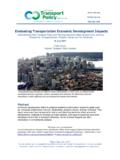





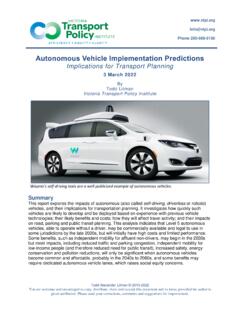
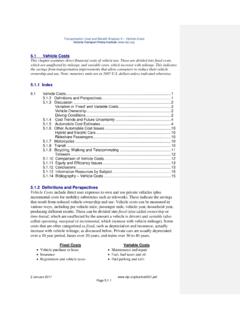


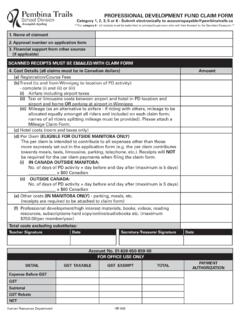
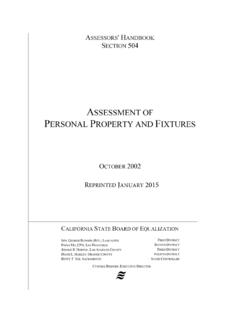
![Welcome. [www.bmo.com]](/cache/preview/5/1/9/a/0/5/c/1/thumb-519a05c10789ed9885efe788559a2d10.jpg)



